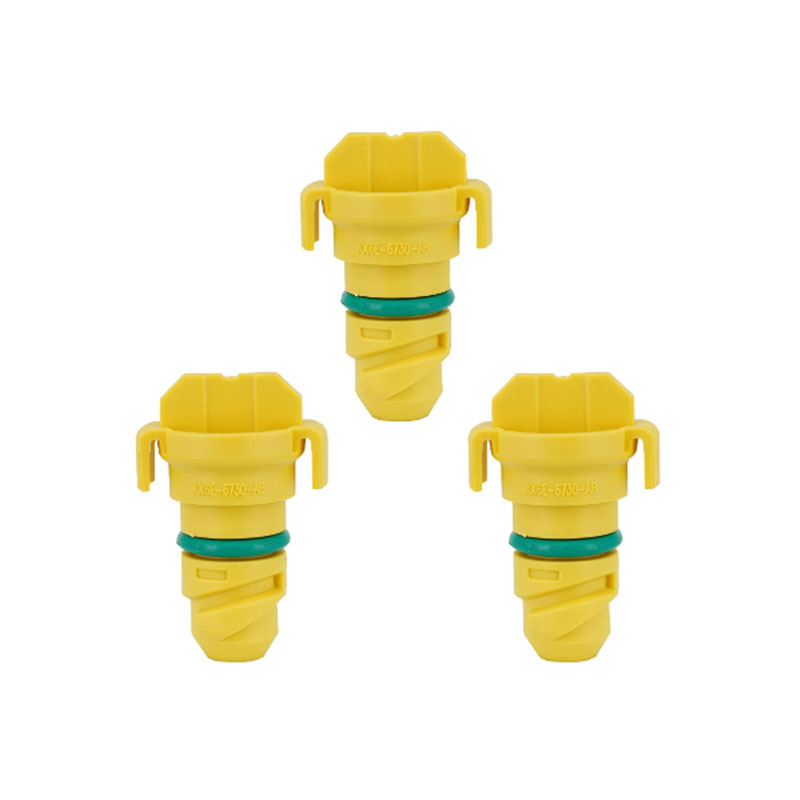Similar Oil Seal Specifications 40x55mm with 8% Tolerance for Optimal Performance
Understanding the 40x55x8 Oil Seal Importance, Types, and Applications
Oil seals are an essential component in various mechanical systems, primarily designed to prevent the leakage of lubricants and keep contaminants out of moving parts. Among the myriad of oil seals available in the market, the 40x55x8 oil seal has gained significant importance due to its versatility and effectiveness in various applications. This article delves into the specifications, types, applications, and maintenance tips for the 40x55x8 oil seal.
Specifications
The designation 40x55x8 describes the dimensions of the oil seal, where - 40 mm is the inside diameter (ID), - 55 mm is the outside diameter (OD), and - 8 mm is the width of the seal.
These measurements indicate a seal that can fit a shaft with a diameter of 40 mm while providing a total outer coverage of 55 mm. The thickness of 8 mm ensures robust sealing performance. Oil seals typically come with several design attributes, including material composition, shape, and construction style.
Types of Oil Seals
1. Single Lip Oil Seal The most common type, featuring a single lip. It is widely used in automotive and machinery applications. The lip rubs against the shaft to create a sealing barrier.
2. Double Lip Oil Seal This type has two sealing lips and is specifically designed for applications where high levels of contamination are expected. The additional lip provides an extra layer of protection against dirt and moisture.
3. Spring-loaded Oil Seal Equipped with a spring, this seal can maintain better contact with the shaft, allowing for effective sealing even in harsh operating conditions. The spring keeps the sealing lip pressed against the shaft, compensating for wear and thermal expansion.
4. Symmetrical Oil Seal These seals can be installed in either direction, making them versatile and easy to fit in various machinery types.
Applications
The 40x55x8 oil seal is utilized across various industries due to its adaptability. Some common applications include
- Automotive Industry Used in engines, gearboxes, and differentials to prevent oil leaks and keep contaminants out.
40x55x8 oil seal

- Agricultural Equipment Essential for tractors and harvesters, ensuring that hydraulic systems remain sealed from dirt and debris.
- Industrial Machinery Employed in pumps, compressors, and conveyors, protecting critical components from oil loss and contamination.
- Aerospace In aircraft systems where lubrication is critical for smooth operation and safety.
- Marine Vessels Used in propeller shafts and other moving components exposed to a demanding environment.
Maintenance Tips
To ensure the longevity and performance of the 40x55x8 oil seal, consider the following maintenance tips
1. Regular Inspection Periodically check for any signs of leakage or wear around the oil seal. Addressing issues early can prevent severe damage to the machinery.
2. Appropriate Installation Proper installation is crucial. Make sure the seal is fitted without excessive force, which could lead to damage.
3. Keep Abreast of Operating Conditions Monitor the operating environment. High temperatures and pressure can wear out seals quickly, so ensuring your machinery operates within specified limits is essential.
4. Use Quality Lubricants The type of lubricant used can significantly affect the oil seal's performance. Ensure that lubricants compatible with the seal material are utilized.
5. Replace Worn Seals If the seal shows signs of deterioration, such as cracking or brittleness, it’s vital to replace it promptly to maintain operational efficiency.
Conclusion
The 40x55x8 oil seal plays a vital role in many mechanical systems, providing efficient sealing solutions that enhance the performance and durability of various applications. Understanding its types, applications, and maintenance can significantly impact the longevity of machinery and equipment, ultimately leading to cost savings and improved operational efficiency. Whether in automotive, industrial, or agricultural settings, investing in quality oil seals like the 40x55x8 is essential for maintaining the integrity and functionality of equipment.
-
Understanding the Front Main Engine Seal: Purpose, Maintenance, and Installation
News Jul.29,2025
-
Understanding O-Rings and Seal Rings: Types, Applications, and Custom Solutions
News Jul.29,2025
-
Understanding Crankshaft Oil Seals: Rear Seals, Pulley Seals, and Their Role in Engine Integrity
News Jul.29,2025
-
The Importance of Front and Rear Crankshaft Seals in Engine Performance and Oil Management
News Jul.29,2025
-
Crank Oil Seals: Functions, Types, and Cost Considerations in Engine Maintenance
News Jul.29,2025
-
A Comprehensive Guide to O-Rings and Seals: Types, Materials, and Global Applications
News Jul.29,2025
-
Mastering Diesel and Performance Engine Maintenance: A Guide to Critical Oil Gaskets
News Jul.28,2025
Products categories















